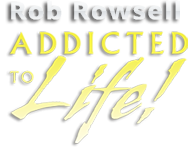Rob Rowsell talks about his strategy for Wealth Development with investments in real estate and beyond. Develop an asset allocation plan and invest your surplus earnings into buckets that will generate passive income streams. This is how you build wealth in the real estate industry to replace your business earnings for retirement.
 Wealth Development With Real Estate – Growth Advantages
Wealth Development With Real Estate – Growth Advantages
This ATL All-In Community Gathering clip opens as Rob discusses his strategy for continuous cashflow. He is always studying to improve his techniques to supplement his retirement bag of money. How does he use that knowledge? He intelligently invests the surplus income from his businesses into ventures that will generate regular cashflow. It can take several investments in order to eventually replace the income brought in by your business.
Rob’s mentor suggested he work on this wealth development strategy about 20 hours per quarter. During this time, Rob sets goals and determines what buckets he allocates his investments into. He makes sure to calculate what his investible net worth is before he invests into those buckets.
There are so many choices on what to invest our funds into, such as the stock market, bonds, and real estate. It make take time, as well as trial and error, for you to find your niche. When you don’t have a wealth development advantage, such as Rob’s knack for real estate, spread your investment out. For example, Rob is not a stock market expert, so he makes long term investments in Index Funds. This simplifies his strategy, as well as minimizing risk.
When you are stacking cash from your business, get educated. Then invest that cash into diverse buckets that will yield mailbox money over time.
Join Our Community
Do you own multi-family properties? If not, do you aspire to one day? Then you should consider joining our online discussion group, the Addicted To Life Community! Each month, Rob Rowsell will teach you what you must do in order to build wealth in the real estate business. It’s not as easy as it looks! Property taxes, liens, and legal fees can all be hard to navigate, so having a successful guide in your corner like Rob is a must! Enroll today!

 Rob Explains His Cash On Cash Return Real Estate Formula
Rob Explains His Cash On Cash Return Real Estate Formula Income Analogy – Passive and Active Income Streams
Income Analogy – Passive and Active Income Streams